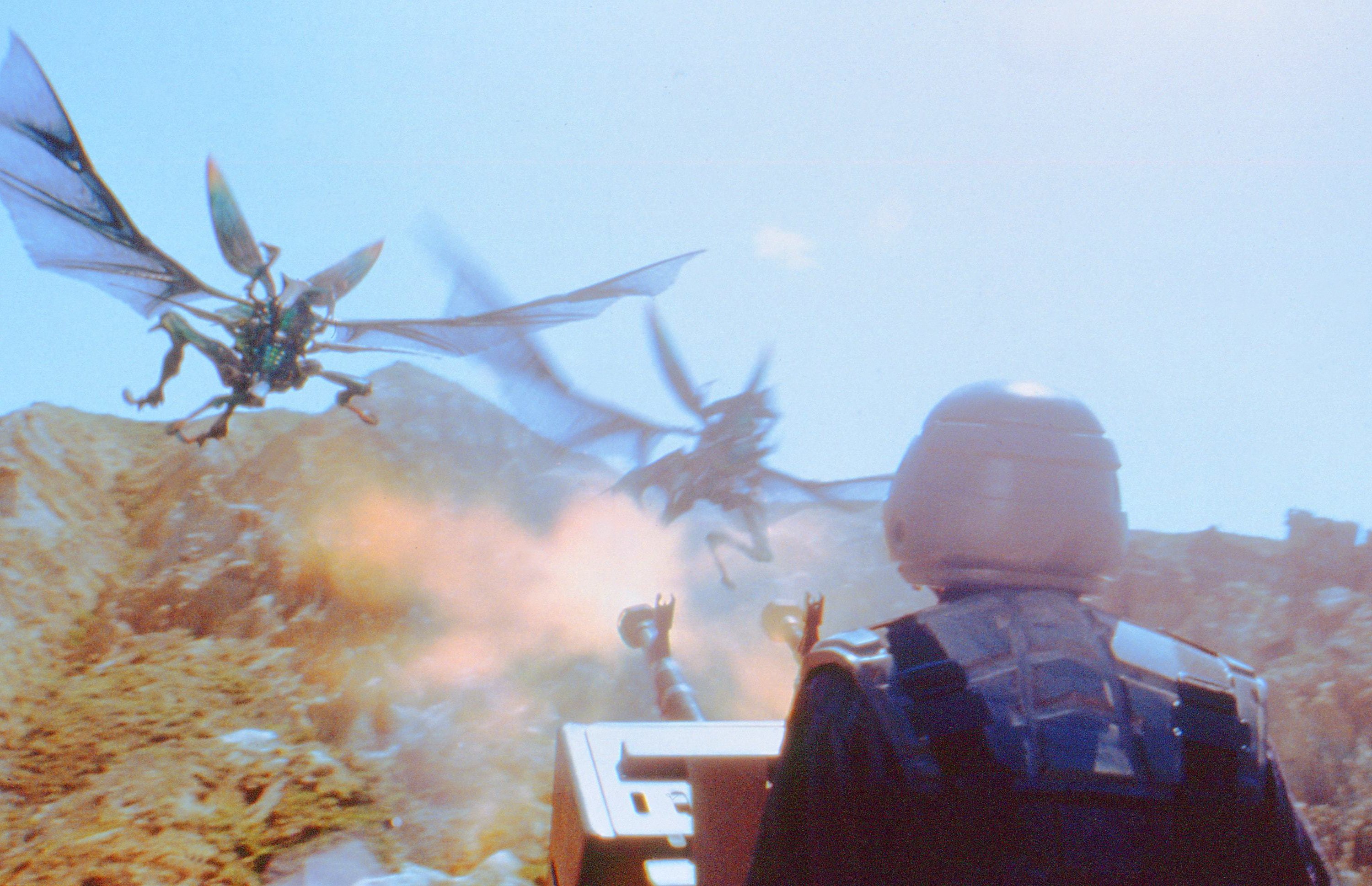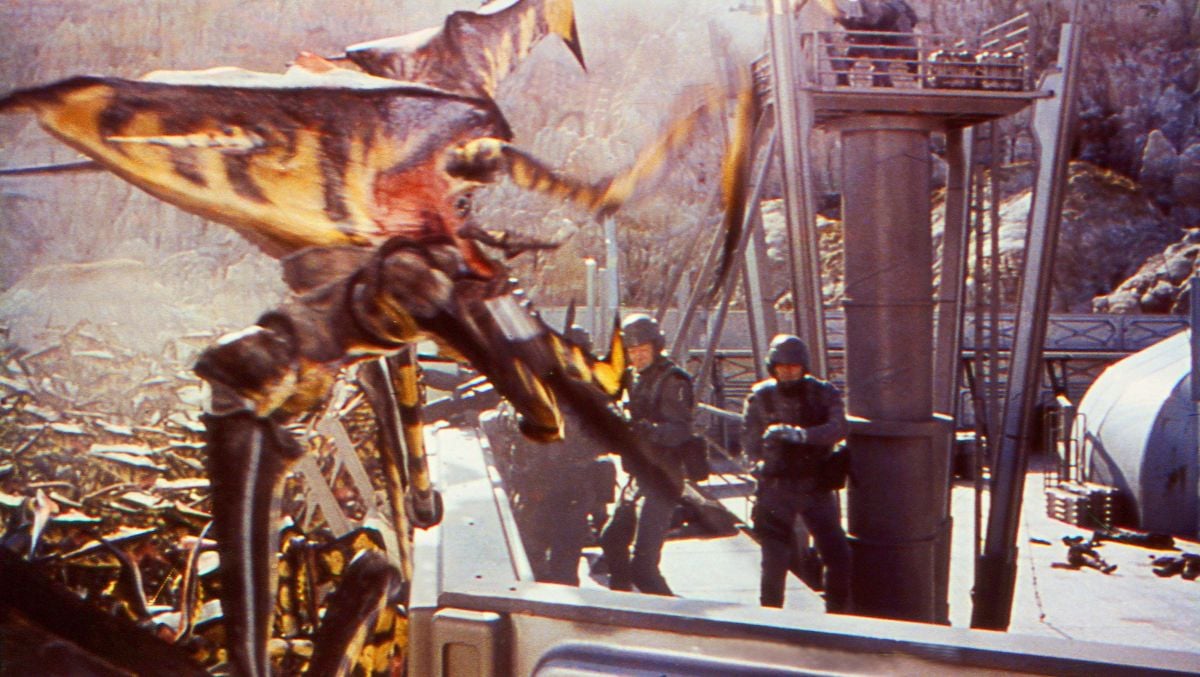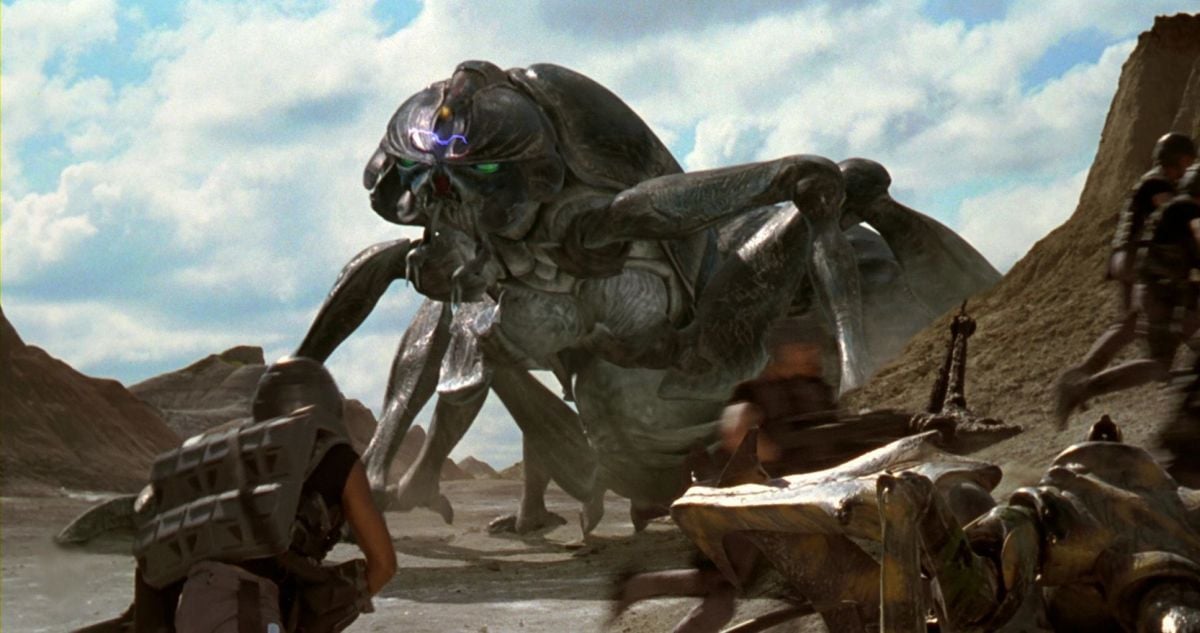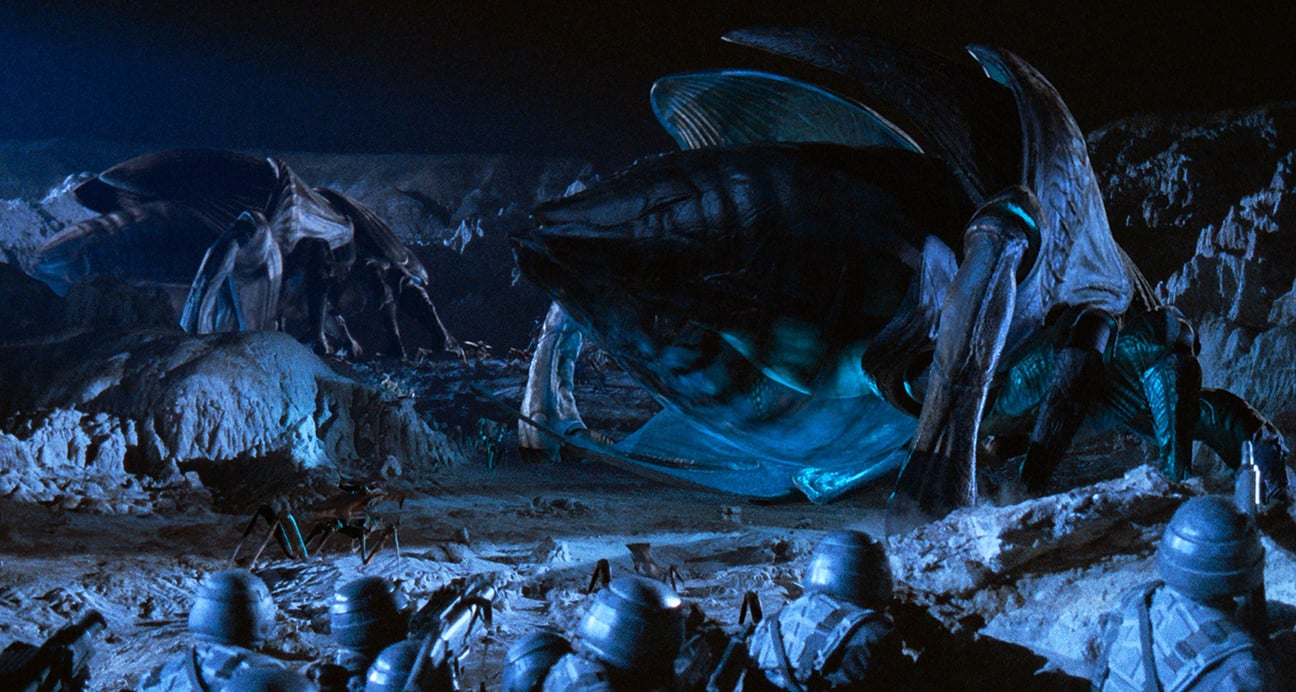The Council of Brain Bugs has decided that it is necessary to cripple the modern United States as a political entity for 10 years. To reduce the US to a state where it could not practically support a major foreign intervention for roughly 10 years.
However, this operation is not a high priority and thus must be completed with minimal commitment. The invasion force will be propelled to the US in drop pods over up to one month, without any additional orbital support, bombardment, or reinforcements beyond the initially budgeted ones.
Furthermore, only the following Arachnid types may be committed to the operation:
Workers: Averages 2 meters, 200 kg, no practical armor. Looks like a smaller Warrior bug. Limbs optimized for utility, primarily digging through dirt and rock, but can engage in combat to roughly the same effectiveness as using a pick axe or shovel.
Hopper: Averages 3 meter, 250 kg, effectively no armor. A strong hop can immediately propel the hopper over a 100 kmh and then glide roughly 10 meters per meter of elevation. Launching from a high location preferred. For example, from a location 100 meters taller than the target, a glide of roughly a km is generally achievable, and the distance can be covered in roughly 30 seconds.

Warrior: Averages 3 meters, 1 ton mass, 5 mm steel armor equivalent. Sloping and armor placement optimization can make effective armor much thicker, and the body is designed not to catastrophically fail even when penetrated, making them more durable than the raw armor thickness suggests. While optimized for combat, they can still engage in some utility work, such as digging.

Tanker: 20 meters, 60 tons empty, up to 40 tons of "fuel". Average armor approximately 20 mm equivalent, once again with some areas both physically and practically thicker. Acid/flamethrower combo can be used for both direct combat and utility, such as clearing obstacles and digging tunnels faster. Large front limbs can also serve as powerful diggers in their own right as well as to remove obstacles through physical force. This with their relatively heavy armor makes them useful breachers, able to accelerate tunnel production when undermining fortifications, or melt through the fortifications when direct assault is preferred.

Light Plasma: 15 meters, 100 tons. 5 mm average armor equivalent, little shaping to improve effectiveness. "Muzzle" energy generally between 400-500 MJ per shot, equivalent to approximately 100 kg of TNT. Initial launch velocity is slow, but the plasma containment field can be programed to decay in such a way to provide propulsion, sacrificing impact energy to increase range and shot velocity. Plasma can accelerate to orbital velocity with explosive energy remaining of about 10 kg of TNT. Can sustain roughly 100 shots in a 24 hour period, with resting a feeding needs, with a burst rate of fire of approximately 1 per 30 seconds.
Heavy Plasma: 50 meters, 2,500 tons. Upper carapace 200 mm effective thickness, underside thinner. Standard muzzle energy about 15 GJ, or about 4 tons TNT equivalent. Like its smaller cousin, can program the plasma containment to decay to increase speed and range at the expense of impact force. An orbital velocity projectile would still have roughly 400 kg of explosive force remaining. Also has the stamina for roughly 100 shots in a day, and can fire up to once every 30 seconds.

So what forces and tactics are needed to cripple the United States? What tactics might the US use to counter?
The US becomes aware of the Arachnid's existence and general capacities 6 months before the invasion, become aware an invasion might be imminent roughly 1 month before the invasion due to the presence of significant bug scouting activities, and can see an incoming wave about 12 hours before it makes landfall, during which they can predict rough landing areas and force composition based on number and size of landing pods.
They however would not be aware of the specific bug goals, nor aware of the overall size and composition of the invasion force, simply what's coming in in the next 12 hours, and don't know that there is only a 30 day window the bugs have available to deploy the landing force before support and reinforcements end.
Hopefully that's enough detail to have an interesting and productive conversation.
However, this operation is not a high priority and thus must be completed with minimal commitment. The invasion force will be propelled to the US in drop pods over up to one month, without any additional orbital support, bombardment, or reinforcements beyond the initially budgeted ones.
Furthermore, only the following Arachnid types may be committed to the operation:
Workers: Averages 2 meters, 200 kg, no practical armor. Looks like a smaller Warrior bug. Limbs optimized for utility, primarily digging through dirt and rock, but can engage in combat to roughly the same effectiveness as using a pick axe or shovel.
Hopper: Averages 3 meter, 250 kg, effectively no armor. A strong hop can immediately propel the hopper over a 100 kmh and then glide roughly 10 meters per meter of elevation. Launching from a high location preferred. For example, from a location 100 meters taller than the target, a glide of roughly a km is generally achievable, and the distance can be covered in roughly 30 seconds.

Warrior: Averages 3 meters, 1 ton mass, 5 mm steel armor equivalent. Sloping and armor placement optimization can make effective armor much thicker, and the body is designed not to catastrophically fail even when penetrated, making them more durable than the raw armor thickness suggests. While optimized for combat, they can still engage in some utility work, such as digging.

Tanker: 20 meters, 60 tons empty, up to 40 tons of "fuel". Average armor approximately 20 mm equivalent, once again with some areas both physically and practically thicker. Acid/flamethrower combo can be used for both direct combat and utility, such as clearing obstacles and digging tunnels faster. Large front limbs can also serve as powerful diggers in their own right as well as to remove obstacles through physical force. This with their relatively heavy armor makes them useful breachers, able to accelerate tunnel production when undermining fortifications, or melt through the fortifications when direct assault is preferred.

Light Plasma: 15 meters, 100 tons. 5 mm average armor equivalent, little shaping to improve effectiveness. "Muzzle" energy generally between 400-500 MJ per shot, equivalent to approximately 100 kg of TNT. Initial launch velocity is slow, but the plasma containment field can be programed to decay in such a way to provide propulsion, sacrificing impact energy to increase range and shot velocity. Plasma can accelerate to orbital velocity with explosive energy remaining of about 10 kg of TNT. Can sustain roughly 100 shots in a 24 hour period, with resting a feeding needs, with a burst rate of fire of approximately 1 per 30 seconds.
Heavy Plasma: 50 meters, 2,500 tons. Upper carapace 200 mm effective thickness, underside thinner. Standard muzzle energy about 15 GJ, or about 4 tons TNT equivalent. Like its smaller cousin, can program the plasma containment to decay to increase speed and range at the expense of impact force. An orbital velocity projectile would still have roughly 400 kg of explosive force remaining. Also has the stamina for roughly 100 shots in a day, and can fire up to once every 30 seconds.

So what forces and tactics are needed to cripple the United States? What tactics might the US use to counter?
The US becomes aware of the Arachnid's existence and general capacities 6 months before the invasion, become aware an invasion might be imminent roughly 1 month before the invasion due to the presence of significant bug scouting activities, and can see an incoming wave about 12 hours before it makes landfall, during which they can predict rough landing areas and force composition based on number and size of landing pods.
They however would not be aware of the specific bug goals, nor aware of the overall size and composition of the invasion force, simply what's coming in in the next 12 hours, and don't know that there is only a 30 day window the bugs have available to deploy the landing force before support and reinforcements end.
Hopefully that's enough detail to have an interesting and productive conversation.
Last edited:
